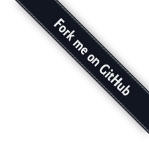User Input: <kbd> and <samp>
The theme supports user input with the <kbd> element
and sample output with the <samp> element.
Sample Output with <samp>
To represent sample or quoted output from a computer program, wrap it in
<samp> tags: Keyboard not found. Press F1 to continue
User Input with <kbd>
To represent user input from a keyboard or any other text entry device wrap it
in <kbd> tags: help mycommand
You can use nested <kbd>’s to represent multiple keystrokes that form a
single input: Ctrl + c.
Up to two levels of nesting are supported by the CSS: Ctrl + b Shift + t.
Representing Onscreen Input Options by Nesting <samp> within <kbd>
A <samp> inside a <kbd> represents input that is based on text presented
by the system, such as selecting menu items or clicking on buttons:
To create a new file, choose the menu option File → New Document.
Don’t forget to click the OK button to confirm once you’ve entered the name of the new file.
Representing Echoed Input by Nesting <kbd> within <samp>
A <kbd> inside a <samp> represents input that has been echoed back to the
user by the system:
If a syntax error occurs, the tool will output the initial command you typed for your review:
custom-git add my-new-file.cpp
Another usage for this is showing the output of a terminal session as a
<samp> inside a <pre>, and with the user-entered parts as <kbd>’s inside
the <samp>:
mike@interwebz:~$ md5 -s "Hello world"
MD5 ("Hello world") = 3e25960a79dbc69b674cd4ec67a72c62
mike@interwebz:~$ █
